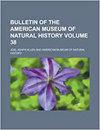Diverse Orthorrhaphan Flies (Insecta: Diptera: Brachycera) in Amber From the Cretaceous of Myanmar: Brachycera in Cretaceous Amber, Part VII
IF 3.4
2区 环境科学与生态学
Q1 BIODIVERSITY CONSERVATION
Bulletin of the American Museum of Natural History
Pub Date : 2016-10-13
DOI:10.1206/0003-0090-408.1.1
引用次数: 44
Abstract
ABSTRACT A remarkable diversity of new nonempidoid orthorrhaphan flies from the mid-Cretaceous of Myanmar (Late Albian–Early Cenomanian, ca. 99 Ma) is presented, including 28 species (all but one new) in 22 genera (13 new), and at least 12 families. Two families are new; three genera are unplaced in Tabanomorpha and one unplaced within Brachycera. Comparisons are presented between the amber taxa and extensive lithified taxa from the Jurassic and Cretaceous of eastern Laurasia. In Stratiomyomorpha: A new species of Zhangsolvidae has color patterns and body shape that apparently mimic Vespidae or other stinging aculeate wasps. Diverse new Xylomyidae and Stratiomyidae are described, the latter with male terminalia preserved in detail. In Tabanomorpha: The genus Athericites Mostovski et al. is synonymized with Palaepangonius Ren, and a new species of Galloatherix Nel is described in which the female proboscis is much longer than that of the male. All three genera were attributed to Athericidae, but the amber species reveal they are more basal tabanomorphs. Described are a new genus of stem-group Tabanoidea and a new species of Cratotabanus Martins-Neto and Kucero-Santos (Tabanidae), previously known from the Cretaceous of Brazil and New Jersey. In Nemestrinoidea: Three species of Hirmoneura Meigen are the first Nemestrinidae known from amber; one species has long cerci typical of Recent species of the genus. A new species of the Mesozoic family Rhagionemestriidae reveals this family is closely related to Acroceridae, not Xylophagidae as previously proposed. In Archisargoidea: A new species of Tethepomyiidae is described, the family known only in Cretaceous amber from New Jersey, Spain, and Myanmar. In Asiloidea: Three new species and genera of Bombyliidae are described, two of them with abdominal setal “baskets” distinctive to females of higher bombyliids. A fourth new asiloid genus is a probable stem-group bombyliid. The recently described Pseudorhagio Zhang et al., is transferred from Tabanomorpha to Bombyliidae. The male of a new species of Burmapsilocephala Gaimari and Mostovski (Apsilocephalidae) has terminalia very similar to that of Evocoa (Evocoidae: Recent, Chile), corroborating close relationship of the two families. In Families incertae sedis: A new species of Hilarimorphites Grimaldi and Cumming (Apystomyiidae) is described, the family known only in New Jersey and Burmese amber and the Recent fauna of California, and a sister group to either Cyclorrhapha or Eremoneura. Mysteromyiidae and Eucaudomyiidae, new families, are described, based on highly modified species with vestigial mouthparts, reduced venation, and unique specializations. Discussion is presented on some morphological features in fossil and Recent Brachycera that have apparent phylogenetic significance but are rarely discussed. This study adds further data to the phenotypic diversity, geological history, and biogeography of a major radiation.缅甸白垩纪琥珀中的各种直蝇(昆虫纲:双翅目:短肢目):白垩纪琥珀中的短肢目,第七部分
摘要:本文报道了缅甸中白垩纪(晚阿尔及利亚-早塞诺曼尼亚,约99 Ma)的非拟正翅目蝇的新多样性,包括22属(13新种)的28种(除1新种外),至少12科。两个家庭是新的;在Tabanomorpha中有三个属未被安置,在Brachycera中有一个属未被安置。对月桂岛东部侏罗纪和白垩纪的琥珀分类群与广泛的石化分类群进行了比较。层肌蜂科:掌形蜂科的一新种,其颜色图案和体型明显模仿胡蜂科或其他有刺刺的胡蜂。描述了多种新的木蝇科和层蝇科,其中层蝇科的雄性终端被详细保存。在Tabanomorpha中:Athericites Mostovski等人将其属与Palaepangonius Ren同义,并描述了Galloatherix Nel的一个新种,其中雌性的喙比雄性的长得多。这三个属都属于Athericidae,但琥珀类显示它们是更基本的tabanomorpha。描述了茎群Tabanoidea的一个新属和Cratotabanus Martins-Neto和Kucero-Santos (Tabanidae)的一个新种,以前在巴西和新泽西州的白垩纪已知。在nemestrindae中:三种Meigen Hirmoneura是最早从琥珀中发现的Nemestrinidae;一种有长尾,是本属最近种的典型。中生代Rhagionemestriidae科新种揭示了该科与Acroceridae的亲缘关系,而不是先前提出的Xylophagidae。在Archisargoidea中:描述了一种新的Tethepomyiidae,该科仅在新泽西州,西班牙和缅甸的白垩纪琥珀中发现。纲:描述了家蚕科3个新种和新属,其中2个具有较高级家蚕雌性特有的腹尾“筐”。第四个新的拟虫属可能是茎群拟虫。最近描述的Pseudorhagio Zhang等人,从Tabanomorpha转移到Bombyliidae。一新种Burmapsilocephala Gaimari和Mostovski (apsilcephalidae)的雄性终端与Evocoa (evocoae:最近,智利)非常相似,证实了两科的亲缘关系。在菊科中:描述了一种新的Hilarimorphites Grimaldi和Cumming (apystomiidae),该科仅在新泽西和缅甸琥珀以及加利福尼亚的近期动物群中已知,是cyclophala或Eremoneura的姐妹群。根据口器退化、脉脉减少和独特特化的高度修饰的物种,描述了神秘蝇科和桉蝇科这两个新科。讨论了化石类和近代类腕足类中具有明显系统发育意义但很少被讨论的形态学特征。本研究为主要辐射的表型多样性、地质历史和生物地理学提供了进一步的数据。
本文章由计算机程序翻译,如有差异,请以英文原文为准。
求助全文
约1分钟内获得全文
求助全文
来源期刊
CiteScore
7.90
自引率
2.90%
发文量
4
审稿时长
>18 weeks
期刊介绍:
The Bulletin, published continuously since 1881, consists of longer monographic volumes in the field of natural sciences relating to zoology, paleontology, and geology. Current numbers are published at irregular intervals. The Bulletin was originally a place to publish short papers, while longer works appeared in the Memoirs. However, in the 1920s, the Memoirs ceased and the Bulletin series began publishing longer papers. A new series, the Novitates, published short papers describing new forms.

 求助内容:
求助内容: 应助结果提醒方式:
应助结果提醒方式:


